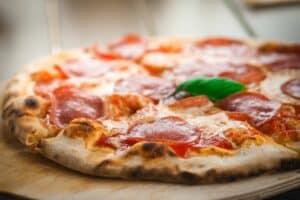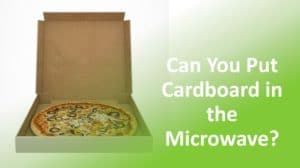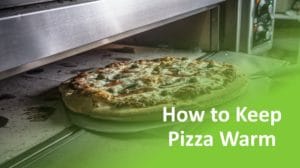You’ve ordered pizza from your favorite pizza joint, but everyone isn’t ready to eat. You want to keep the pizza warm, so you toss the box in your oven.
While you’re throwing it in, the question will likely cross your mind: Can you put cardboard in the oven?
It’s happened to most people at some point or another— you’ve questioned whether your frozen pizza’s cardboard can be used in the oven or if that’s a recipe for fire. This article will explore what happens when the cardboard is put in an oven and some alternative baking methods to keep everyone safe.
Can You Put Cardboard in the Oven?
Long story short, the safest option is to avoid putting any cardboard in the oven. Even at your oven’s lowest temperature, there’s a chance of spontaneous combustion or fire from putting cardboard in the oven.
Manufacturers create cardboard with a paper structure and a corrugated board. According to officials, paper catches fire at 451 degrees Fahrenheit and a corrugated board is slightly higher than that. That said, most homemade and frozen pizzas need to bake at a temperature above 400 degrees. There isn’t much wiggle room between the temperature your pizza needs to bake at and the temperature it takes to burn cardboard.
Can You Put a Pizza Box in the Oven?
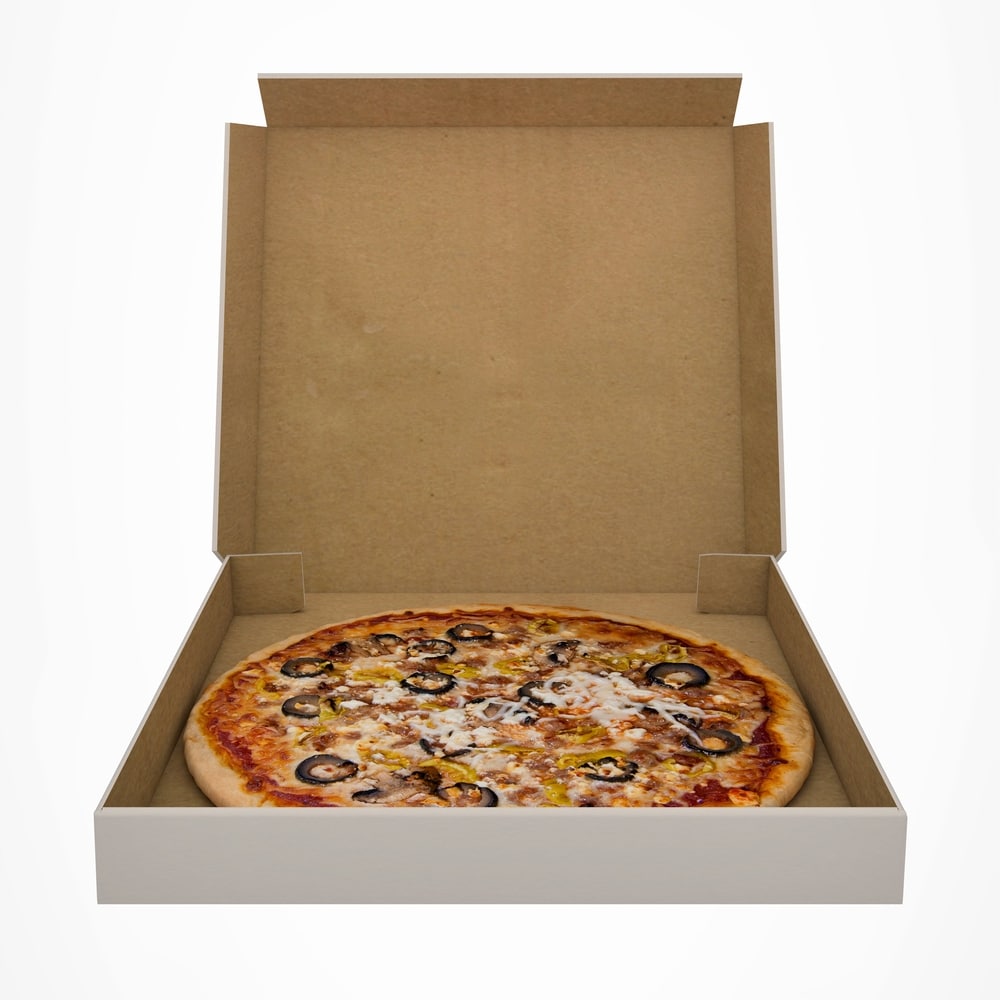
Some reviewers online will say it’s safe to put your oven on its lowest temperature and slide the pizza box in to keep it warm because then it’s far below that 400-degree mark. Unfortunately, even below the combustible temp, there’s still a chance your cardboard will catch fire. The type of oven you’re using and whether there’s paper or plastic attached to the cardboard both play a factor in the cardboard’s flammability.
For example, ovens with more exposed heating methods may create more of a fire chance than a range that focuses more on heat circulation than direct heat exposure.
Your best bet for making food at home is to avoid putting any form of cardboard in your oven. It’ll keep you safe, the oven protected, and your food in top condition.
Related: Clean Cut Pizza Guide
What Are the Alternative Methods?
Instead of throwing your pizza box in the oven to keep it warm during a party or sliding your frozen meal, cardboard and all, onto the rack, consider several safer options that could result in better tasting food for your dinner.
Cardboard Support
For frozen pizza fans and enthusiasts, you’ve likely encountered a pizza or two that came with a circular piece of cardboard. The cardboard usually rests under the frozen pizza in its packaging.
That piece of cardboard is intended to serve as support for the pizza itself; it helps keep the pizza sturdy during transport and helps hold ingredients together.
It would be best if you did not bake your pizza with that circle cardboard piece. It won’t add to your baking experience whatsoever— in fact, it’ll probably slow your bake time down and ruin the quality of your food. However, you can use it as extra support. Use the cardboard to help slide your pizza onto the rack.
Bake Directly on the Rack
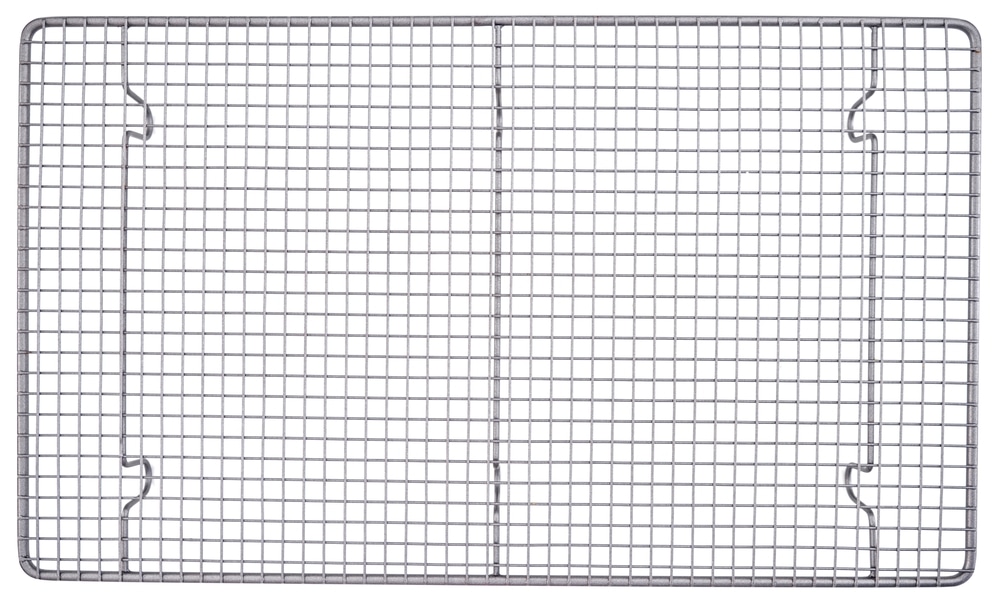
Instead of baking your pizza, dessert, bread, or entrée with cardboard, consider placing it directly on the oven rack instead. This exposure helps crisp your bread and crust, heat your food quickly, and sometimes add to your food’s overall flavor.
We will note; this method can result in a bit of a mess. You may notice that some of your pizza cheese slides off or the bread flakes while inside the oven. If you use this baking method frequently, you may need to clean your oven semi-frequently, too.
Cookie Sheets
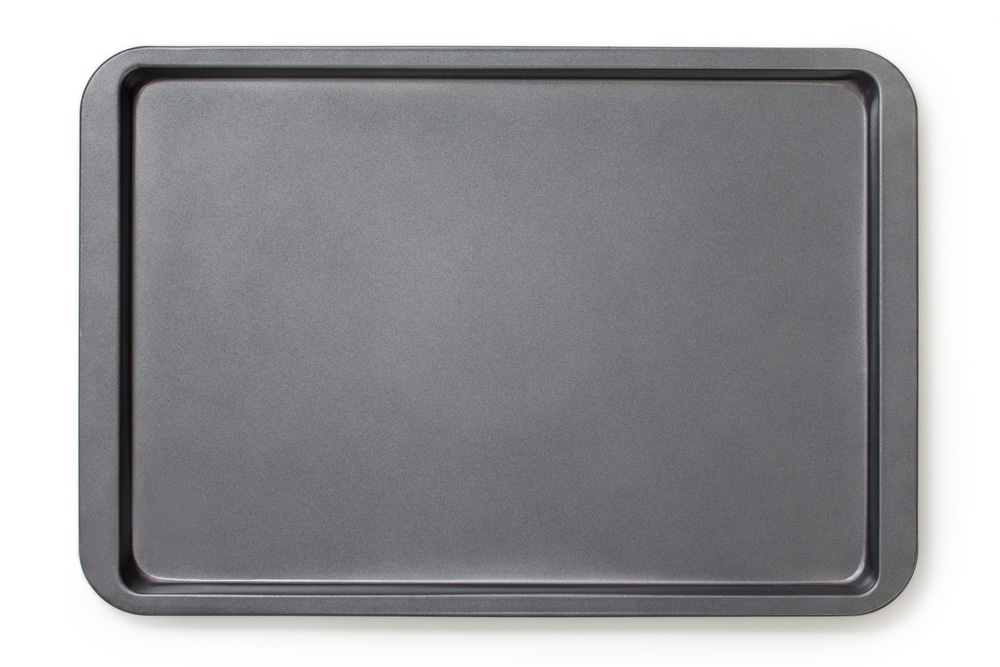
Cookie sheets should be a staple item in every kitchen, in our opinion. It is one of the cleanest and most direct ways to bake or cook things in your oven. Cookies sheets can handle larger, sturdier items, like a frozen pizza, or smaller items that could slip through the oven rack, like cookies.
When you pick up your cookie sheet, double-check if it’s stick or nonstick. That will help determine whether you need to grease the sheet before cooking any food on it. The metal cookie sheet will heat up in the oven and help evenly cook your food. You won’t have to worry about the sheet catching on fire at any point.
Pizza Pan or Pizza Stone
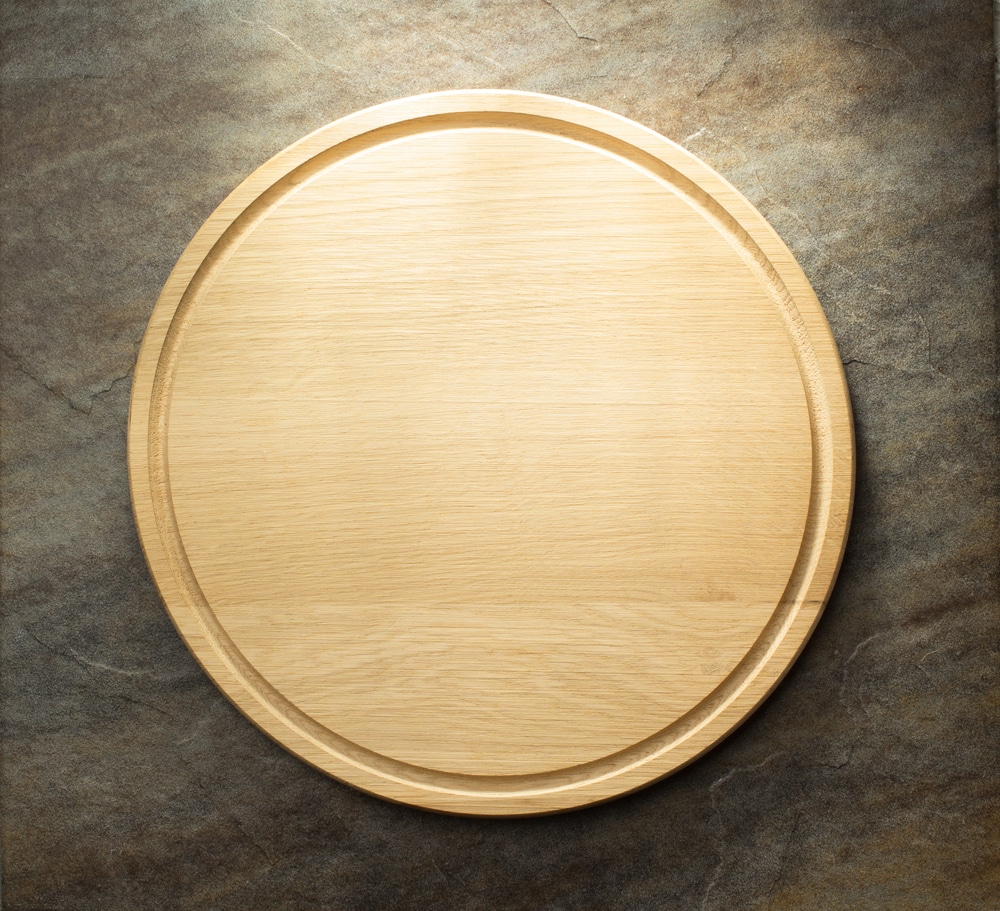
If you know you’re going to be baking a significant amount of homemade or frozen pizza, consider investing in a baking tool designed explicitly for pizzas. A pizza pan or pizza stone is typically a circular item that you can bake your pizza on top of in an oven.
A pizza pan is similar to a cookie sheet. It’s often metal and relatively thin. The pan can be washed easily and won’t overheat in your oven.
A pizza stone is thicker and heavier than a pizza pan; it’s likely made of literal stone or ceramic material. This device will protect your food, help keep the oven clean, and eliminate any concerns about cardboard oven fires.
Final Thoughts
Keep in mind; when handling hot items, like a pizza directly from the rack, a cookie sheet, a pizza stone, or a casserole dish, always protect your hands. These items can heat up to temperatures that are extremely dangerous to touch. Always use an oven mitt when removing these hot dishes from the oven.
Instead of questioning, “Can you put cardboard in the oven?” and leaving a potential kitchen fire up to chance, it’s safest to keep cardboard clear from your baking. Don’t use it in your cooking, if possible, and keep it clear from your oven rack.
While cardboard itself can typically hold up to hot temperatures in normal conditions, you won’t be able to control all of the factors that could spark a fire. The humidity in your oven, direct exposure to heat, and the cardboard material will all play a role. Instead, opt for a safer option from this list. You’ll ensure that your food is excellent while keeping your house safe at the same time.

